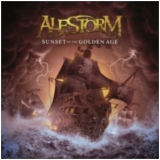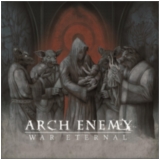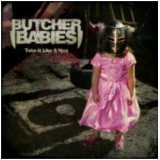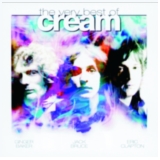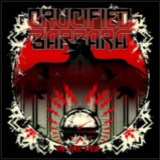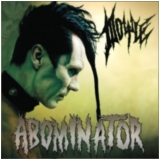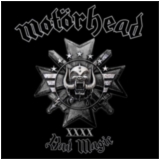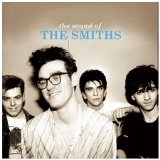First of all, try getting your head around this radical concept: instead of giving “writing advice” or spending time running a YouTube author channel (I don’t have the looks or the vocal-fry voice for it), I decided to try something practical instead, and I decided to publish it on here, no matter how it turned out.
I’m not going to advise you, or anyone else, to try this, but I honestly believe it’s a good way to potentially achieve a number of goals. It could get you past a period of writer’s block, if you’re stuck in the middle of a particular draft. It could start you along the road to a totally different writing destination. It could improve your overall standard of writing. Note – a lot of ‘could’ in all of that.
What am I going to do? Easy, I’m going to write something I don’t particularly want to write, in a style which I would never normally consider using.
I’m not into wolf stories, fairy-tales, fairy-tale parodies, flowery descriptions of, well, anything, and I don’t like the trope of a super-cool, badass (magical or mundane) young woman kicking everything’s ass. I know I wrote a couple of vampire books where there’s a super-cool badass woman kicking everything’s ass, but I had to get that out of my system. Also, she wasn’t young. Also, I really like Buffy so I’m a bit of a hypocrite.
And so I end up here, telling myself I have to write a few chapters about a super-cool, badass young woman kicking everything’s ass. And it has to feel like a fairy-tale parody, with flowery descriptions and wolves. I hate myself already. Brace yourselves, we’re going in…
THIS IS WHERE IT STARTS, IF YOU SKIPPED PAST MY LAME DISCLAIMERS
Night air hissed by, given a sibilant voice by his passing, the sensation akin to hurled handfuls of dusted ice cleaved by his hurtling body. Frigid nocturnal fingers grasped at the slicked-down slate-grey mane, caressing flexing, corded muscles as they rippled in time with the relentless, rhythmic pounding of his fore-legs.
Wide, unblinking eyes, blacker than the emptiest night sky, focussed ahead, locking on each trace of the spoor no matter how insignificant. A crimson smear on a broken stalk of grass. A perfect ruby dewdrop, no larger than a pinhead, clinging to a leaf still trembling with the aftershock of the prey’s urgent, panic-stricken flight.
The scent of terror hung in the air, an intoxicating fragrance of fear without hope, of one who knows the inevitability of its own destruction.
Massive, clawed paws crushed and scattered the detritus of the forest floor. Needles, cones, loose twigs, and the stinking black mulch lying beneath it all.
Ahead, a glimpse of movement. A dark shape, small and furtive. The prey. The rush of excitement heralding the kill spurred him to even greater speed, barrelling through the underbrush towards his target.
When the huge wolf leaped from the cloying dark of the forest into the moonlit clearing, the girl staggered backwards against the unforgiving bark of an ancient, towering tree.
The wolf landed on all four paws, halting no more than a handful of yards from the cowering prey. It stared down at the girl, taking in everything it saw, hesitating as it savoured the moment when it would deliver the final strike, jaws-wide.
The girl swept her black cloak aside, held up the impaled, twitching body of a young hare. The creature’s front legs jerked uselessly, scrabbling at nothing. The girl’s eyes were bright, clear, no fear in them. Her mouth was set in an indifferent, humourless grin. No scent of terror about her.
Blood dripped steadily from the dying hare to the curved fronds of a fern, ticking in the still of the clearing, ticking like a handmade grandfather clock.
The girl stroked the hare’s ears back, close to its head, hushed it as if calming a babe. She tenderly clasped the skull and twisted. There was a crack of tiny bones, and the hare dangled limp from her hand.
“Your Pappy never tell you not to chase really obvious blood trails, Mister Wolf?” the girl said. She tilted her head to one side. “Oh, but how could he, being all that time dead?”
The wolf had a voice. Not human, yet not entirely brutish. He raised a huge paw, his whole body trembling with anticipation as he studied the girl by the light of the moon.
“I know you.”
“You all know me.” She stepped away from the tree trunk, dropping the dead hare and shedding the cloak to reveal another beneath. A closer fit this one, dark red, the burgundy of drying blood beneath a winter sunset. The hare’s broken carcass lay in the decaying blackness of crushed leaves, needles and rotted moss, but the girl’s hands were not empty.
The wolf saw the knife in the girl’s left hand. No glimmer of a moonlit reflection, the blade forged dull by design. He didn’t yet take a step closer to her, tasting a fresh scent in the air.
“Silver,” the wolf said.
“Goes in nice and slick, slippety-slip, but the bleeding just doesn’t quit. Not even for big ones like you.”
“You can’t stop me with that.”
“Come a little closer.”
The wolf started to circle the girl. Still no scent of fear. He did not know why, and it bothered him.
“All of your kind,” the wolf said, “your time in this place is done.”
The girl’s right hand flicked beneath the cloak for a moment, returning with a new weapon. Shotgun. Black. Pistol grip and sawn-off triple barrels. Two under, one over, with a selector switch set to fire all three barrels on one pull of the single trigger. She raised her arm, aimed the gun at the wolf’s gigantic head.
“How many times have I heard that, Mister Wolf?”
The wolf glared, loops of drool hanging from its jowls between jagged, nine-inch fangs. The bunched muscles of its haunches rippled as it prepared to pounce on the girl, to tear into her with tooth and claw.
“You have no respect for the rightful owners of this land,” the wolf said.
The girl shook her head, dark humour curling her mouth into a sadistic leer.
“Fuck rightful.”
The wolf leaped at the girl, jaws wider than the span of her arms packed with gleaming, bone-white blades.
She pulled the trigger. All three barrels at once.
THERE YOU GO. THAT WAS CHAPTER ONE.
I enjoyed writing that a heck of a lot more than I wanted to, definitely more than I want to admit. If you liked it, maybe I’m getting everything else wrong and I should ditch my own style and go full…whatever that was.
Maybe.


